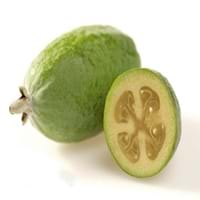Health Benefits
Anti depressant, Cancer prevention, Reduces nervous tension, Treatment of alzheimer's disease, Treatment of Lung disease
Cancer prevention, Heart care, Prevents constipation, Regulation of heart rate, Treatment of colonic diseases
General Benefits
Digestive aid, Helps in weight loss, Improves blood circulation, Strengthens bones, Treatment of common cold
Controls blood pressure, Cures cough, Digestive aid, Flu treatment, Improves eye vision, Treatment of common cold
Skin Benefits
Brightens and lightens complexion, Skin rejuvenation
Brightens and lightens complexion, Reduces wrinkles
Hair Benefits
Promotes longer and healthier hair, Protects hair
Promotes longer and healthier hair, Regulates hair growth
Allergy Symptoms
NA
Abdominal cramps, Diarrhea, Skin Rashes, Swelling of mouth, tongue or lips, Vomiting
Side Effects
Allergic reaction
Allergic reaction, Coagulation
Pregnant Women
Yes
Not Available
Best Time to Eat
As a snack in the late afternoon, Don't consume at night and before bed, Eat the fresh ones, avoid mixing with any other foods, don't eat after meal., Morning time (before lunch)
Along with meal, As a snack in the late afternoon, Don't consume at night and before bed, Eat the fresh ones, avoid mixing with any other foods, don't eat after meal., Morning time (before lunch)
Vitamin A (Retinol)
Not Available
Vitamin B5 (Pantothenic Acid)
Vitamin C (Ascorbic Acid)
Vitamin K (Phyllochinone)
Not Available
Calories in Fresh Fruit with Peel
Not Available
Not Available
Calories in Fresh Fruit without Peel
Calories in Frozen Form
Not Available
Calories in Canned Form
Not Available
Type
Tree fruit
Tree fruit, Tropical
Season
Autumn, Winter
Autumn, Monsoon, Summer
Varieties
Anatoki, Gemini, Kaiteri, Kakariki, Pounamu, Unique, Apollo, Den's Choice, Kakapo, Mammoth, Opal Star, Triumph and Wiki Tu
Black Gold, Cheena, Cochin, Dang Rasimi, Golden Nugget and Golden Pillow
Color
Green
Dark green, Golden yellow, Green, Indigo, Magenta, Yellowish-orange
Inside Color
White
Yellow
Texture
Succulent
Fibrous
Origin
Argentina, Brazil, Paraguay, Uruguay
India
Grows on
Not Available
Trees
Soil Type
Clay loam, Gravely loam, Sandy
Clay loam, Porous, Sandy, Well-drained
Climatic Conditions
Cold, Warm
Humid, Warm
Facts about
- Feijoa is called as "pineapple guava" in some countries.
- Feijoa tree is an ornamental plant that can also be used as hedge & windbreak.
- All parts of feijoa fruit are edible(skin is mostly discarded).
- There are up to 500 seeds in Jackfruit & these seeds are edible.
- Root extracts of Jackfruit tree is used to treat diarrhea, fever and asthma.
- The taste of jackfruit is combination of mango, banana, melon and papaya.
Top Producer
New Zealand
India
Other Countries
Australia, Azerbaijan, India, Japan, United States of America
Bangladesh, Indonesia, Nepal, Thailand
Top Importer
China
United States of America
Top Exporter
New Zealand
India
Botanical Name
Acca sellowiana
Artocarpus heterophyllus
Synonym
Feijoa sellowiana or Orthostemon sellowianus
Artocarpus heterophylla or Artocarpus integra or Artocarpus integrifolia
Subkingdom
Tracheobionta
Tracheobionta
Division
Magnoliophyta
Magnoliophyta
Class
Magnoliopsida
Magnoliopsida
Subclass
Rosidae
Alismidae
Family
Myrtaceae
Moraceae
Species
A. sellowiana
A. heterophyllus
Generic Group
Myrtle
Not Available
Difference Between Feijoa and Jackfruit
We might think that Feijoa and Jackfruit are similar with respect to nutritional value and health benefits. But the nutrient content of both fruits is different. Feijoa and Jackfruit Facts such as their taste, shape, color, and size are also distinct. The difference between Feijoa and Jackfruit is explained here.
The amount of calories in 100 gm of fresh Feijoa and Jackfruit with peel is Not Available and Not Available and the amount of calories without peel is 55.00 kcal and 95.00 kcal respectively. Thus, Feijoa and Jackfruit belong to Low Calorie Fruits and High Calorie Fruits category.These fruits might or might not differ with respect to their scientific classification. The order of Feijoa and Jackfruit is Myrtales and Rosales respectively. Feijoa belongs to Myrtaceae family and Jackfruit belongs to Moraceae family. Feijoa belongs to Acca genus of A. sellowiana species and Jackfruit belongs to Artocarpus genus of A. heterophyllus species. Beings plants, both fruits belong to Plantae Kingdom.









